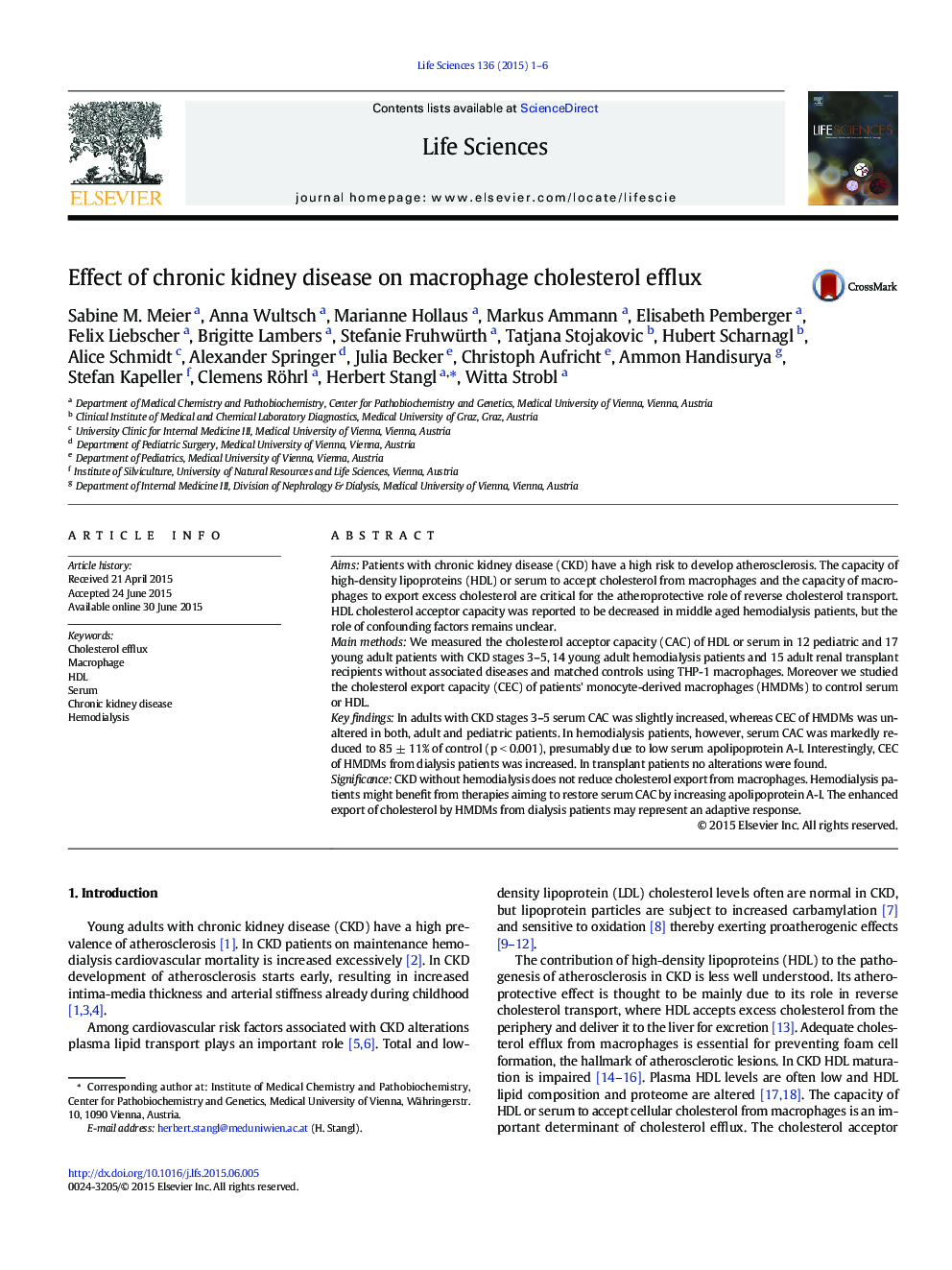| Article ID | Journal | Published Year | Pages | File Type |
|---|---|---|---|---|
| 2550862 | Life Sciences | 2015 | 6 Pages |
ABSTRACTAimsPatients with chronic kidney disease (CKD) have a high risk to develop atherosclerosis. The capacity of high-density lipoproteins (HDL) or serum to accept cholesterol from macrophages and the capacity of macrophages to export excess cholesterol are critical for the atheroprotective role of reverse cholesterol transport. HDL cholesterol acceptor capacity was reported to be decreased in middle aged hemodialysis patients, but the role of confounding factors remains unclear.Main methodsWe measured the cholesterol acceptor capacity (CAC) of HDL or serum in 12 pediatric and 17 young adult patients with CKD stages 3–5, 14 young adult hemodialysis patients and 15 adult renal transplant recipients without associated diseases and matched controls using THP-1 macrophages. Moreover we studied the cholesterol export capacity (CEC) of patients' monocyte-derived macrophages (HMDMs) to control serum or HDL.Key findingsIn adults with CKD stages 3–5 serum CAC was slightly increased, whereas CEC of HMDMs was unaltered in both, adult and pediatric patients. In hemodialysis patients, however, serum CAC was markedly reduced to 85 ± 11% of control (p < 0.001), presumably due to low serum apolipoprotein A-I. Interestingly, CEC of HMDMs from dialysis patients was increased. In transplant patients no alterations were found.SignificanceCKD without hemodialysis does not reduce cholesterol export from macrophages. Hemodialysis patients might benefit from therapies aiming to restore serum CAC by increasing apolipoprotein A-I. The enhanced export of cholesterol by HMDMs from dialysis patients may represent an adaptive response.
